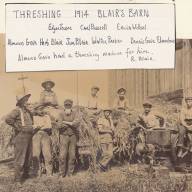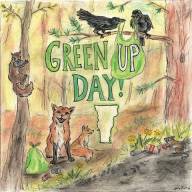Ky Koitzsch, Fayston, happened to see some courting turkeys in his yard at the beginning of this month. He shared a picture and some information about turkeys breeding in the wild.
“Mostly we were seeing females (hens) and juvenile males (jakes) all winter eating seeds below the bird feeders and we didn't start to see the adult males (toms) until late March. Typically toms congregate in bachelor groups away from females in the winter. Soon after showing up, however, they started engaging in their courtship displays (fluffing feathers, strutting, and gobbling) to attract females. Their fleshy snood and wattle, protuberances that hang from above their beak and from their throat, respectively, swell as they become engorged with blood and turn from blue to bright red during their displays,” Koitzsch said.
(See the engorged snood hanging over the toms' beak. Red, blood engorged caruncles, or fleshy growths, can also be seen on the neck of this hen inn the picture).
“Turkeys breed in Vermont from early April to early June but the peak breeding season is mid-April. On this day, April 1, approximately 12 hens were below a feeder pecking away like usual. I hadn't seen or heard any toms from my vantage point. Soon, however, I saw that one hen was laying down, wings spread, and looking alert. When hens are ready to mate, they will approach a strutting male and express their interest by wiggling their tail feathers or circling him, and then will lie down,” he reported.
“Out of my view, this female had apparently enticed a displaying tom. The hen remained motionless almost as in a trance as the tom, still fluffed up in full display, climbed on top of her. He stood balancing on her for about four minutes before she finally lifted her tail fan signaling she was ready. He stepped off behind her and they touched organs called a cloaca to transfer sperm from the male. This "cloacal kiss" only takes seconds,” Koitzsch explained.
He noted that the tom will continue breeding other females while the hen seeks a safe place to make a nest. She will lay a clutch of 10-15 eggs over 12-18 days, and incubate the eggs for about 28 days before they hatch.













